In Somalia, women in sports is neither ordinary nor simple. Female athletes face societal pressure, extremist threats, and severe underfunding.
Many talented women have either fled the country or given up their dreams because it simply isn’t safe.
The story of Samia Yusuf Omar stands as a tragic example.
In April 2012, Somalis were shocked by the death of the young athlete, who drowned in the Mediterranean Sea while trying to cross from Libya to Italy on a migrant boat after the overcrowded vessel ran out of fuel, and during a rescue attempt by the Italian Navy, Samia was among those who perished.
After competing in the 2008 Beijing Olympics, Samia faced threats from militant groups like Al-Shabaab, who opposed women participating in sports. In search of a safer place to continue her training for the 2012 London Olympics, she moved to Ethiopia in 2010.
Her journey later took her through Sudan and into Libya, where she hoped to reach Europe for better opportunities. She never made it.
Despite all odds, a new generation of young women is rising. In Mogadishu, the Somali women’s handball team is training hard every day, preparing to represent their country in the Africa Zone 5 women’s youth and junior tournaments of the International Handball Federation Trophy Africa tournament, which will be held in Uganda in May 2025.
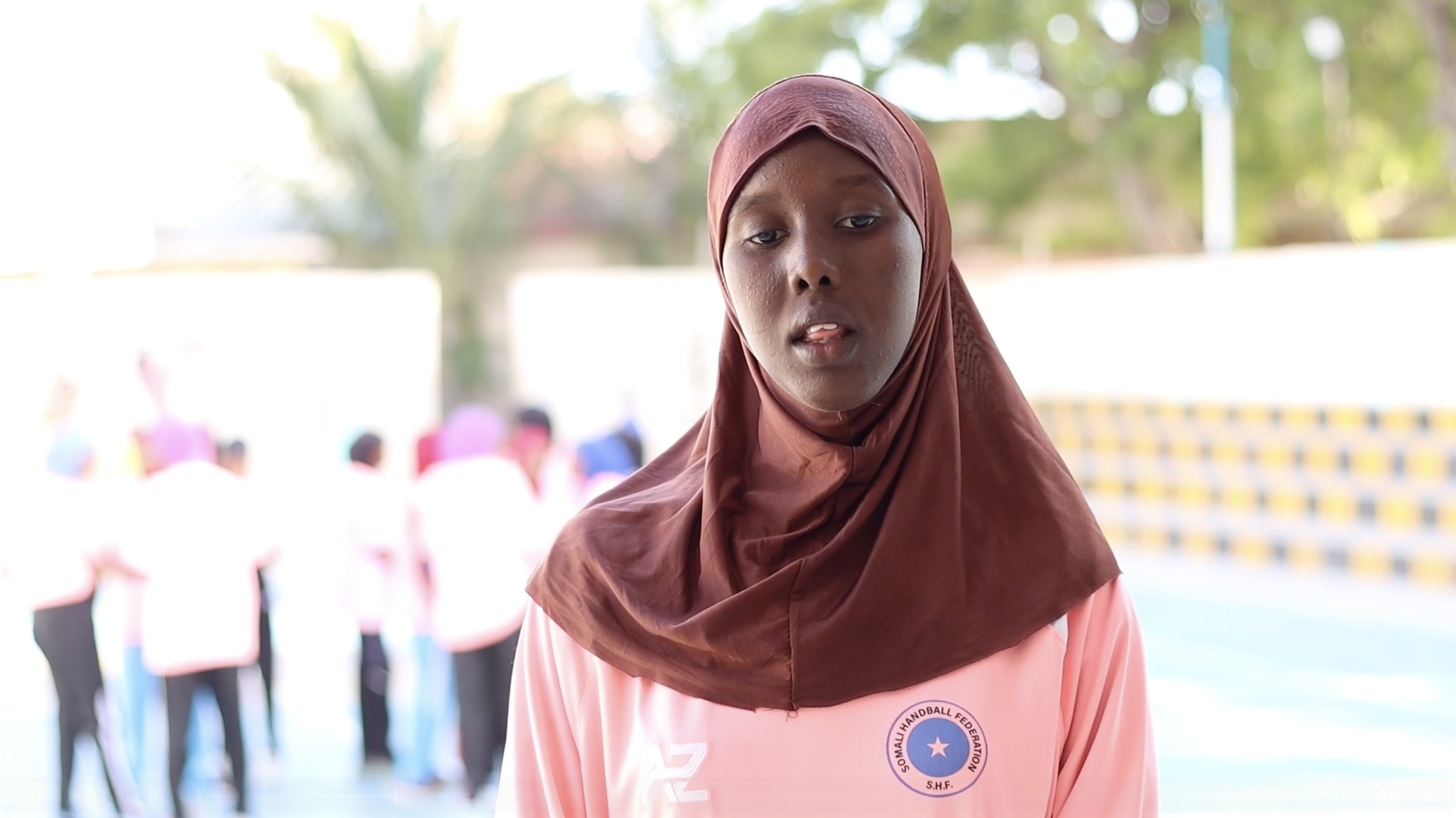
One of these players is 17-year-old Fowsiya Nur Hassan Ali, who plays as number 5 for her team.
Growing up in a deeply patriarchal culture, her path was not easy, but she received strong encouragement from her mother.
“I joined this team in 2022 after my mother encouraged me,” Fowsiya says as her teammates gather in a circle to pray for strength, ending another day of training on a dusty, hot field in Boondheere district.
The field they use is part of a district hall, where male players often dominate the space, making it difficult for the women to secure training slots. Still, Fowsiya remains determined.
She developed her love for sports early on, often watching the American NBA games on YouTube.
“But there are some people who do not like me playing and who don’t want to see me succeed in sports as a woman,” she says.
“I faced both encouragement and discouragement,” she admits.
However, Fowsiya refuses to listen to those who belittle women athletes. Her message to critics is simple:
“I would say to them, ‘Come and see how we’re doing in the stadium. Even if you’re not willing to play, just come and watch.'”
She says she feels even more motivated when more fans show up to watch. Her dream is to one day represent Somalia on the international stage.
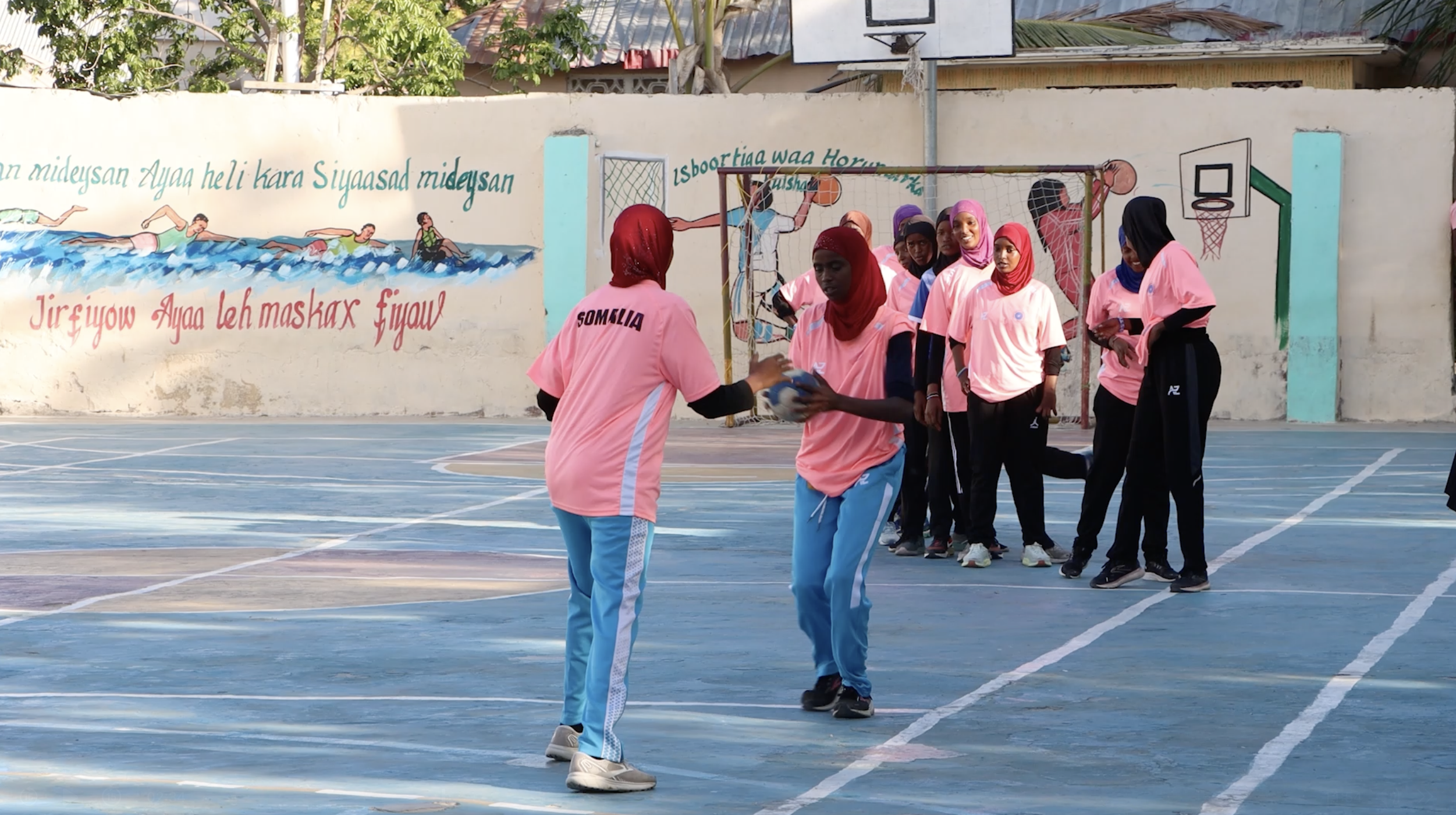
Mohamed Hurshe Hassan ‘Enow,’ President of the Somali Handball Federation, reflects on the journey of Somali handball and the many hurdles they still face.
“From 1991 onwards, my colleagues and I began recruiting men’s and women’s handball teams to compete at the national level,” he says.
“During the civil war, Mogadishu was divided into two parts, separated by a green line. One part was controlled by warlord General Mohamed Farah Aidid’s militia, while the other was under the control of Aidid’s rival Ali Mahdi’s militia. Once again, sports played a role in reopening the city and breaking the Green Zone barrier that had divided it.”
Today, the women’s handball team battles not only cultural barriers but also financial hardship. The players have just one pair of clothing and shoes to train in.
“One pair of trainers costs only $35,” Hurshe notes, highlighting how even small needs are difficult to meet.
Fadumo Ali Abdirahman, the team’s coach, talks about the ongoing struggles — shortages of t-shirts, socks, shoes, and tracksuits — but also about their growing ambitions.
“We began training this team from the very beginning. First, they played in Serie B, and then they came to Serie A,” she explains.
Back in 2018, when Somalia’s under-18 handball team participated in a tournament in Uganda, they were heavily defeated by the hosts, 37-16. But this time, Fadumo is hopeful.
“Even though we have limited resources and equipment such as t-shirts for training and shoes, we are trying our best,” Fadumo says.
“We will continue to strengthen the team, Insha’Allah, since we are participating in an international competition. We hope for a very beautiful victory, Insha’Allah.”
For many of the young players, handball offers a more accessible route than football, which demands larger teams and more equipment.
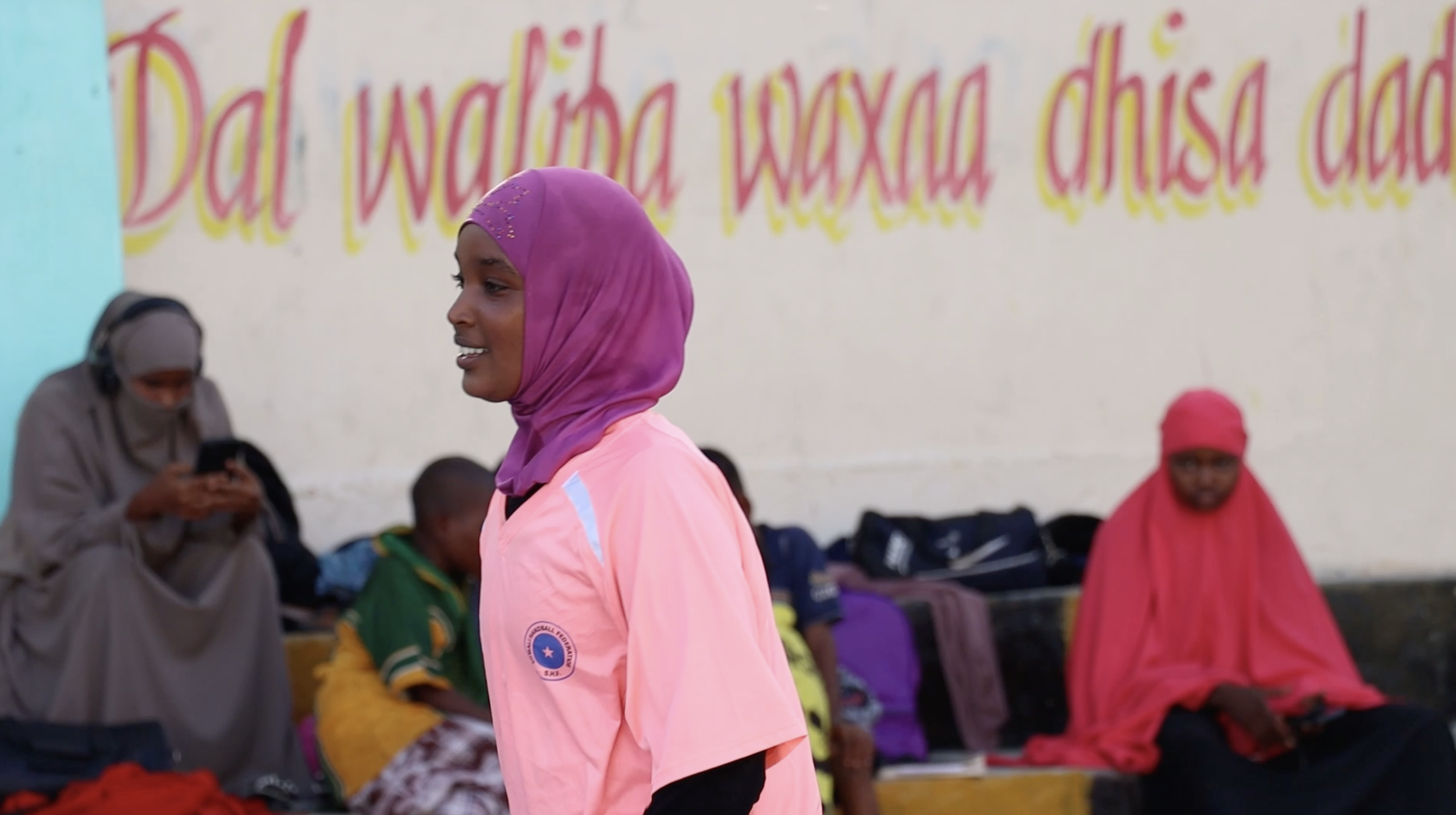
“The rules are different,” explains Hodan Mohamud Abdullahi, another 17-year-old player.
“In football, you need more people to play various roles, but with handball, I can play alone on the field. I don’t need anyone to help me. I can play by myself and try out the best skills I can develop.”
Another rising star, 17-year-old Nasteho Mohamud Khamiis, dreams of playing at the national level — a dream she hopes to realize soon.
“After the game in Uganda, I am going to play at the national championship with my favorite team, Heegan,” she says, referring to Somalia’s national premier league team established under the Somali Police Force in the 1970s.
Her journey has not been easy. It involved long months of training, even during the holy month of Ramadan.
“We continued training for six months now. Even during the holy month of Ramadan, we trained during the night,” Nasteho shares.
She, too, has a message for skeptics:
“Come and see.”
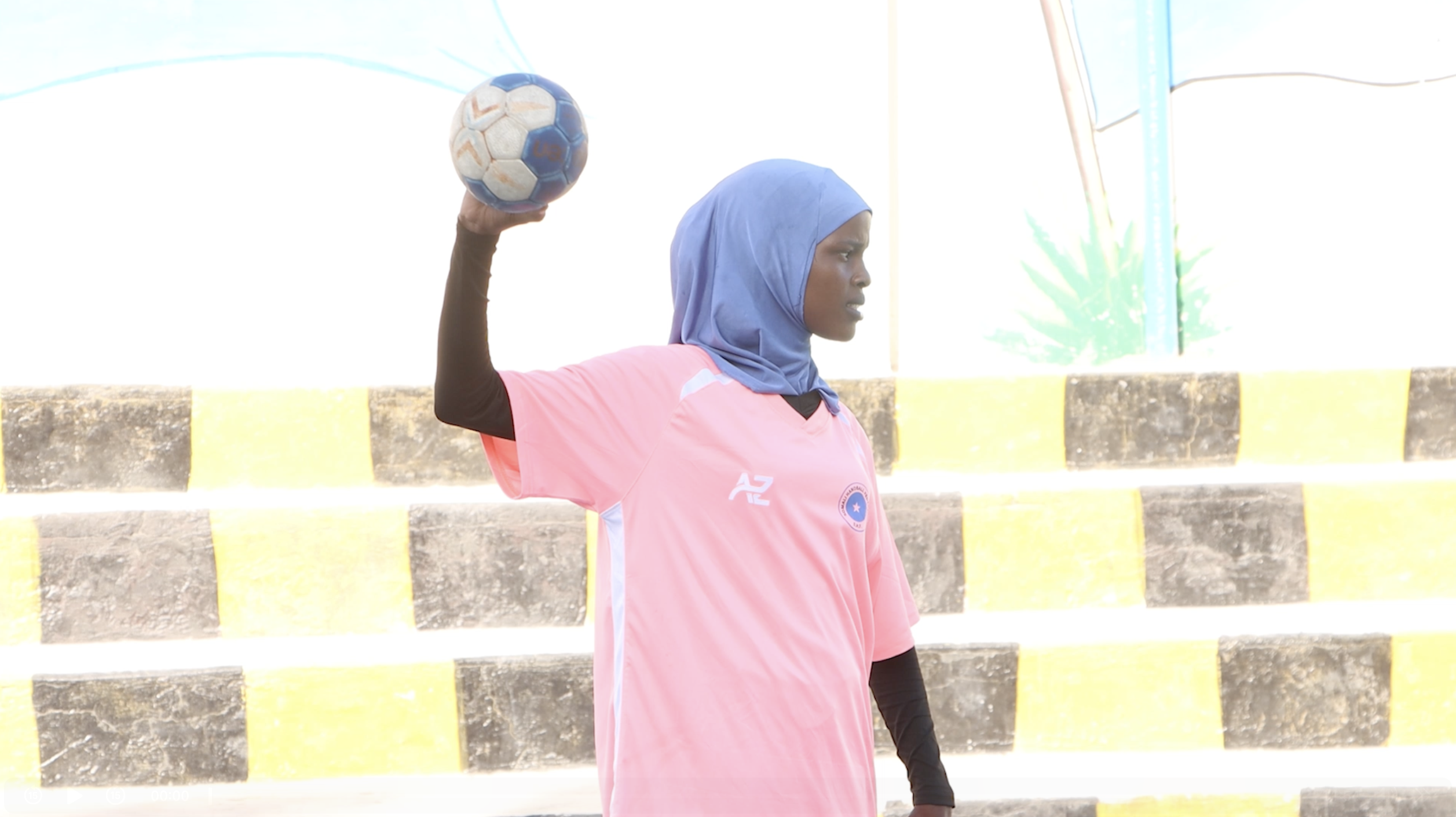
Encouragingly, the culture around women’s sports in Somalia appears to be shifting. Somali men are beginning not only to accept but actively support women athletes.
Hassan Yusuf Abdullahi, a fan from Boondheere, regularly comes to watch the women’s team play.
“I’m very happy. As someone from Boondheere, I’m one of those who really love handball. I come to watch because I support the girls. I admire the progress these girls are making. I’ve always been passionate about handball, and now I stand with the girls. I support them wholeheartedly, and I’m proud of them. I’m truly happy to see them representing our nation, and I fully support them,” Hassan says.
Coach Fadumo also calls for continued support:
“I ask our fans and supporters to continue supporting us. I ask them to come to the stadium, watch the games, and cheer our women as they play,” she appeals.
Despite all the daily threats they face — especially the risks of being targeted by militant groups like Al-Shabaab — none of the women speak publicly about it, following instructions from their management to avoid raising security risks.
Still, the players remain full of hope and determination. Hodan sends a powerful message to other young women:
“Women can do anything. Sadly, some women believe that they cannot achieve anything. But you must understand, it’s all about your mindset,” she says.
“If you set a goal today and believe that you can achieve it, you surely will. But if you believe you can’t, then you won’t achieve it.”
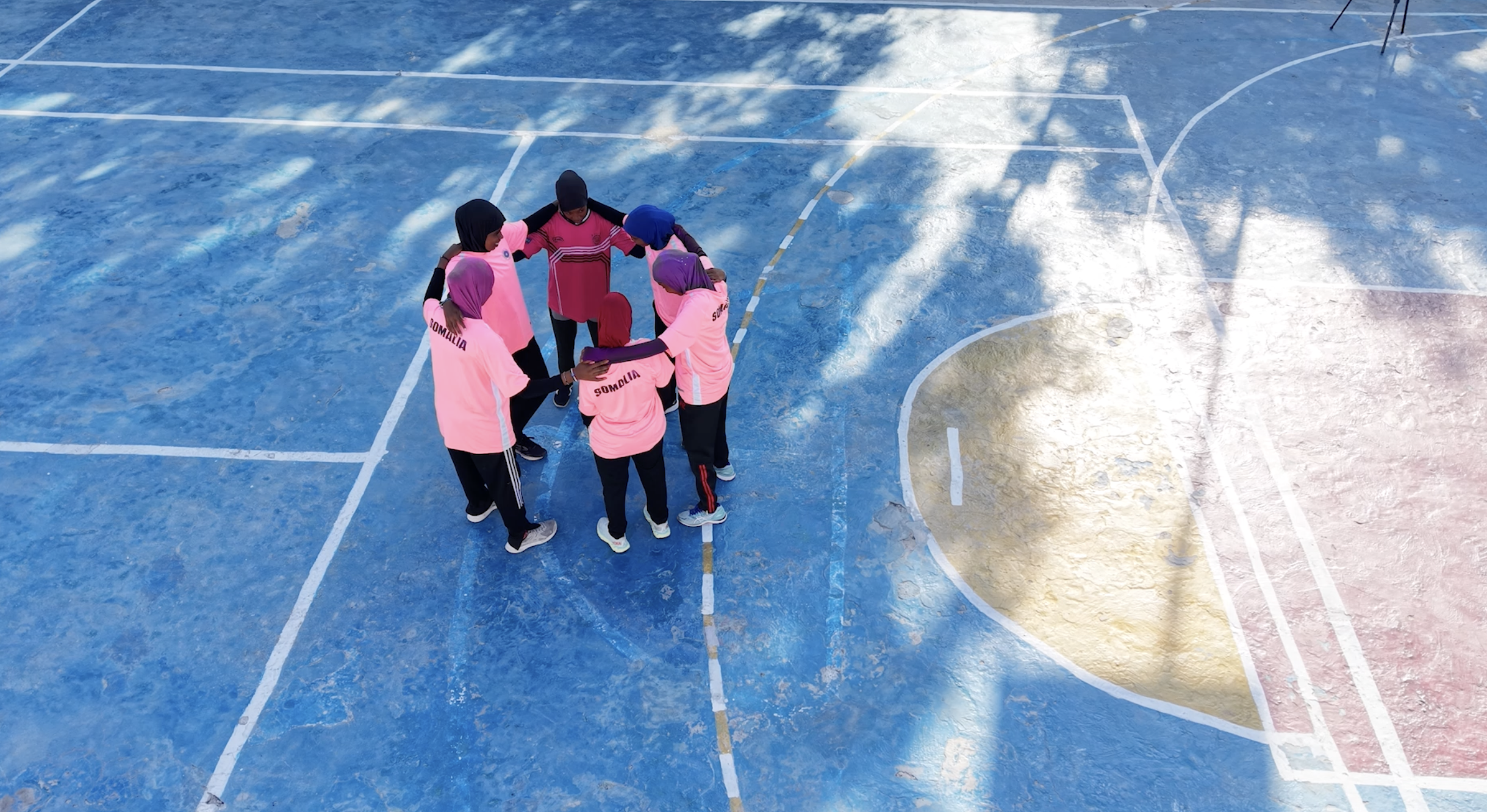
Nasteho proudly reminds everyone what is at stake for her and her teammates:
“Each of us is striving to represent our Somali flag, bring home the victory, and win the trophy,” she says.
“It has been my dream to wear the t-shirt with Somalia painted on it in international games. God willing, we hope to bring victory to our country.”

